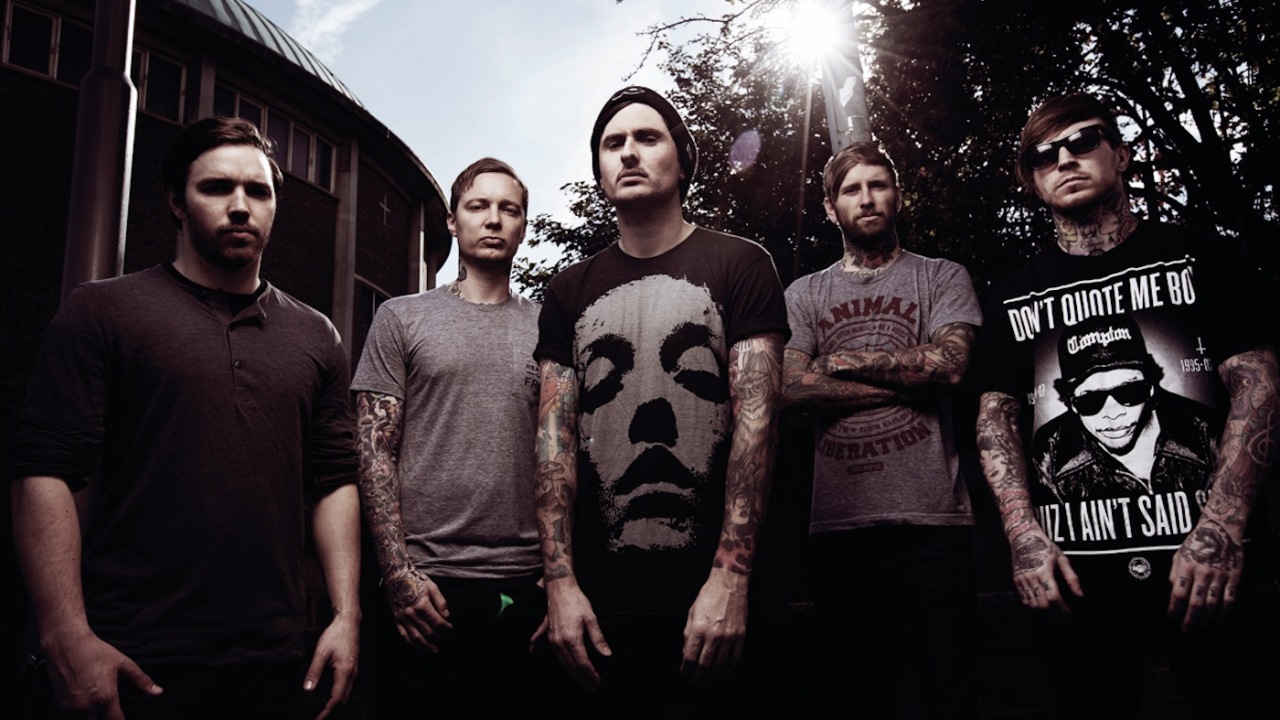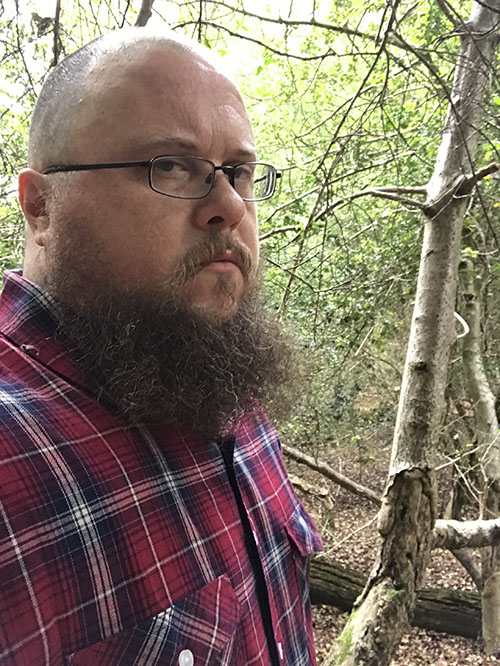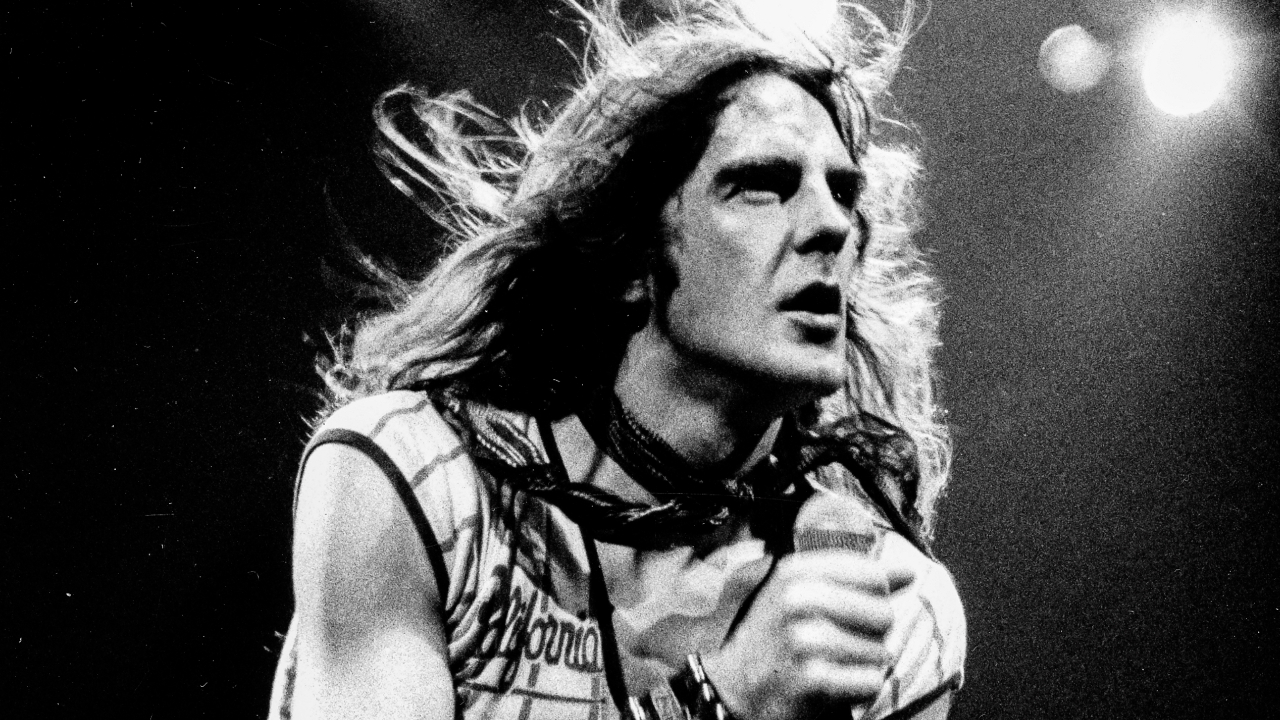G'day Of Darkness: Hammer Does Australia
Think Aussie metal starts with AC/DC and ends with Parkway? As an enticing new documentary shows, The Thunder Down Under goes far, far deeper than that...

“When the dust and smoke clear from the nuclear destruction, bangers and thrashers everywhere will be pushing aside the corpses of eternity to once again hear the thrashing on their mega blasters and unite in a hell-raising party of mayhemic destruction.” – Mortal Sin, Mayhemic Destruction sleeve note, 1987
“Australians like to do everything at full pace, putting in 100% effort. We are a small country at the bottom of the world and to get noticed, we have to go to extremes.”
Nick Calpakdjian, director of the outstanding new three-part, 165-minute documentary DVD Metal Down Under, is fondly accounting for the tendency of his homeland to produce some of the most rabid, zealous and transgressive expressions of underdog metallic fury over the last 40-plus years. “In our heavy music we get noticed by going all out. There is no point replicating what is already out there because we’re not really in the spotlight and not likely to get noticed unless we are doing something a little offbeat or different.” /o:p
“I guess the hunger comes from the isolation,” adds Andrew Haug, veteran Aussie metal DJ and drummer with Melbourne’s Contrive, “creating something of a desperation approach to be heard or to get out of here, just like the ol’ convicts.”
Even before the arrival of rock godheads AC/DC, Australia laid a spectacular claim on the foundations of heavy metal in the hairy shape of Sydney’s fabulous Buffalo – arguably second only to Black Sabbath for pile-driving metallic intensity in the early 70s – whose politically incorrect sleeves were the earliest evidence of an aggressively masculine streak of earthy humour that runs through Australian metal (and cinema), from the raunchy innuendo of AC/DC to the sardonic deviance of Blood Duster, from the puerile outrage of Sydney punk institution Hard Ons to the frenzied porno splatter-core of Fuck I’m Dead.
“There is a definitive tongue-in-cheek attitude,” agrees Nick. “Aussies have a real self-deprecating sense of humour. We don’t mind taking the piss out of ourselves. A lot of the bands come from the angle of making music for themselves and not for commercial reasons, so they might as well have fun doing it.”/o:p
“Australians are quite a full-on bunch all together,” reckons Steve Hughes, ex-drummer with Sydney thrash pioneers Slaughter Lord and Mortal Sin, now one of the best stand-up comics on the UK circuit. “I used to laugh when I’d be in the UK and hear Australians talking about how they were just so laidback in Australia. I’d think, ‘What the fuck are you talking about? You’re not laidback, it’s just sometimes so hot there you couldn’t be arsed to get up and punch someone.’ Australia in general has always been a very masculine-dominated culture. It goes with the territory. It was founded on convicts and thus also the police. It’s hot and dusty and brutal.”/o:p
Sign up below to get the latest from Metal Hammer, plus exclusive special offers, direct to your inbox!
By the late 70s AC/DC had relocated and Buffalo had tailed off, but their bassist Peter Wells joined the first lineup of long-running bad-boy brawlers Rose Tattoo, whose success confirmed the potency of Australia’s burgeoning bar-room circuit. With the global ructions caused by NWOBHM reaching the Antipodes in the early 1980s, a full-blown homegrown Aussie HM scene began to emerge; well-remembered local heroes like Bengal Tigers, Taipan, Taranis, Virgin Soldiers, Blackjack (whose ‘pirate metal’ shtick predated Running Wild, let alone Alestorm), Renegade, Ion Drive, Vice, Shy Thunder, Rosanna’s Raiders and Nothing Sacred crawled into the sunlight to fill a growing hunger for live metal thrills in a country that was rarely on any overseas band’s tour schedule. With a small population spread along such a massive coastline, regional scenes and loyalties became very powerful.
Similar instabilities derailed another great Aussie thrash import of the era: Hobbs’ Angel Of Death, whose 1988 debut is a snarling classic of OTT table-flipping neck-abuse. It’s a story often repeated over the years; many of Australia’s most promising rising stars – Bestial Warlust, Infected, Massive Appendage, Allegiance, I Killed The Prom Queen (who only returned this year with the very decent Beloved) – imploded after brief but intense careers. “You do need a high level of commitment to be involved in any kind of artistic endeavour in Australia,” ponders Steve. “It’s a very mainstream culture, which is why from the very beginning I got into tape trading and fanzines as I knew it was the only way to get noticed overseas. There wasn’t much point getting noticed here because there’s nothing here to get any kind of notice from, the size of the population compared to the size of the country just makes it impossible.” By the start of the 1990s, Australian metal was getting organised, producing its own rock press, radio shows, labels and festivals – most notably Melbourne’s Metal For The Brain, launched in ’91 by local thrash legends Armoured Angel (the nationwide Big Day Out followed soon after) – all committed to mobilising and advancing domestic talent. With this improvement in resources and support, multiple scenes mushroomed, often warping and melding a variety of sounds and styles into something distinctly strange and distinctly Aussie. The eccentric Sadistik Exekution emerged as one of the world’s most important, feared and admired bands in both death and black metal, while the comedy stoner grind of Blood Duster, Disembowelment’s pioneering fusion of funeral doom, ambient and DM, and the multifaceted, kaleidoscopic versatility of Canberra warhorse Alchemist confirmed the growing confidence and individualistic impulse of Australian metal in the 90s. The death and grind scenes expanded rapidly and rabidly, the nation forging a reputation for full-on scorching brutality with ultra-heavyweights like Misery, Damaged, Abramelin, Martire, Manticore, Psychrist and Psycroptic, as well as the perennial kings of Christian DM, Mortification. Aussie black metal produced the mighty Bestial Warlust, as well as world-class esotericists like Gospel Of The Horns, Destroyer 666, Lord Kaos, Razor Of Occam and Nazxul, the latter featuring the return of Steve Hughes to extreme metal drumming. Incongruously, this hot, sunny continent also distinguished itself with some of the world’s coldest, darkest doom, the likes of Paramaecium, Mournful Congregation and Elysium pioneering the genre’s funereal extremes with music that seems to yearn for freezing gloom, while the solemn gothic artistry of Virgin Black, Avrigus, Chalice and Rise Of Avernus sound freakishly out-on-a-limb in this rugged, sun-drenched paradise.
Australia remains a land of extremes. Dave Haley – workaholic drummer with Hobart’s full-force death machine Psycroptic, as well as Blood Duster (whose hilariously contrary bassist Jason Fuller likens Psycroptic in the DVD to “a typewriter falling down the stairs”) and many others – is internationally revered as one of the world’s fastest (and best) drummers, while the brain-melting experimental horror of Brisbane’s anonymous black magicians Portal has the rest of the world glaring in Australia’s direction with the same mixture of confusion, excitement and fear that once accompanied the pronouncements of Sadistik Exekution.
In the 21st century, with the growth of social media and ready access to technology, there have never been so many opportunities for Australian bands to get themselves noticed beyond their remote island boundary. As a result, the country has shaped the landscape of modern ‘heavy music’ like never before with scene leaders like Parkway Drive, I Killed The Prom Queen, Thy Art Is Murder, Northlane and The Amity Affliction, while quirky, uncompromising genre-mashers like Ne Obliviscaris, Frankenbok, The Berzerker, Karnivool, Voyager, The Amenta and King Parrot testify to the country’s wide-ranging eccentricity and progressive urge, as well as a unique Australian-ness that resists elucidation.
“We do have our own distinct sound that really can’t be defined by one specific genre,” reckons Andrew, “but to describe it best would be a ‘tough’ and ‘outsider’ type attitude. Bands just did what they wanted their own way, real DIY approach.” In Nick’s documentary, more than one Aussie musician identifies the Australian metal MO with the definitive phrase: “don’t give a fuck”. “Australian bands have generally developed their own sounds independently,” explains Nick. “Australia has stayed pretty underground and when a band breaks through it is because they are usually really good, but also really different to what is happening elsewhere, and so stands out.” With the release of Metal Down Under - a charming and thorough labour of love filled with fond reminiscences from dozens of entertaining Aussie metal raconteurs – the rest of the world has a chance to get up to speed with the most exciting metal scene in the Southern Hemisphere. As Nick concludes: “We’ve always been here, rocking out at the bottom of the earth, and every now and then the metal world shifts its focus and realises there’s some pretty bloody good bands making amazing music down here.” As 2015 kicks into gear, expect some big noise to come hurtling northwards very soon.
WIZARDS OF OZ
Ten of the best Aussie metal exports…
BUFFALO
This raucous Sydney quintet honed their red-blooded riffing and menacing machismo over an opening triptych of increasingly heavy albums from 1972-74.
AC/DC
Well, d’uh.
SLAUGHTER LORD
“One big powerhouse of talented but dysfunctional lunatics” according to drummer Steve Hughes, Slaughter Lord were Australia’s first avowedly extreme metal band. “It was just a really amazing and magical time as a new form of music and an entire subculture was being born.”
MORTIFICATION
Melbourne’s God-fearing DM institution quickly became the world’s best-known extreme Aussie import after signing to Nuclear Blast and releasing 1992’s other-worldly opus Scrolls Of The Megilloth. Frontman Steve Rowe has steadfastly helmed the group through 27 years, 14 albums and numerous lineup changes.
SADISTIK EXEKUTION
Notorious across the globe for their mad, transgressive anarchy, SadEx didn’t just push the envelope, they shat in it and rammed it into your face. Catching the ears and eyes of the early 90s Norwegian BM ‘Inner Circle’, this fractious crew – helmed by Dave Slave and Rev Kriss Hades – disintegrated in the mid-00s, but they cast a long shadow (and smell).
BLOOD DUSTER
Melbourne’s hilariously contrarian stoner-riffing porno-grind sleazebags Blood Duster exemplify Australia’s ‘don’t give a fuck’ ethos to such a degree they recorded and cut an entire original album before destroying the master tapes and releasing the unplayable vinyl with the title – what else but KULT – scratched into it.
BESTIAL WARLUST
Bestial Warlust spearheaded a furious form of bullet-belted black-thrash barbarism which, for a time, was dubbed ‘war metal’. Though shortlived, they proved a fertile spawning ground; guitarist KK Warslut went on to form the magisterial Destroyer 666, while vocalist Bloodstorm joined brutalists Abominator and drummer Hellcunt fled to Gospel Of The Horns and Vomitor.
ALCHEMIST
“I think, for me, Alchemist have to be considered one of the most influential and significant bands to come out of Australia,” asserts Nick of Perth’s eclectic veteran psychonauts. “They had a unique style and were instrumental in developing the scene in Australia through the festival they inherited from Armoured Angel, Metal For The Brain.”
PARKWAY DRIVE
The cream of the modern global metal-core scene, this Byron Bay quintet quickly outgrew their early status as protégés of I Killed The Prom Queen; 10 years later PD were the headliners and look set to dominate for some time yet.
THE AMITY AFFLICTION
One of a number of Aussie youngsters pouring through the cracks left by Parkway Drive’s march across the globe, their slot as main to support to Of Mice & Men’s huge UK tour this year is a telling sign of their inevitable rise to superstardom./o:p
Chris has been writing about heavy metal since 2000, specialising in true/cult/epic/power/trad/NWOBHM and doom metal at now-defunct extreme music magazine Terrorizer. Since joining the Metal Hammer famileh in 2010 he developed a parallel career in kids' TV, winning a Writer's Guild of Great Britain Award for BBC1 series Little Howard's Big Question as well as writing episodes of Danger Mouse, Horrible Histories, Dennis & Gnasher Unleashed and The Furchester Hotel. His hobbies include drumming (slowly), exploring ancient woodland and watching ancient sitcoms.

